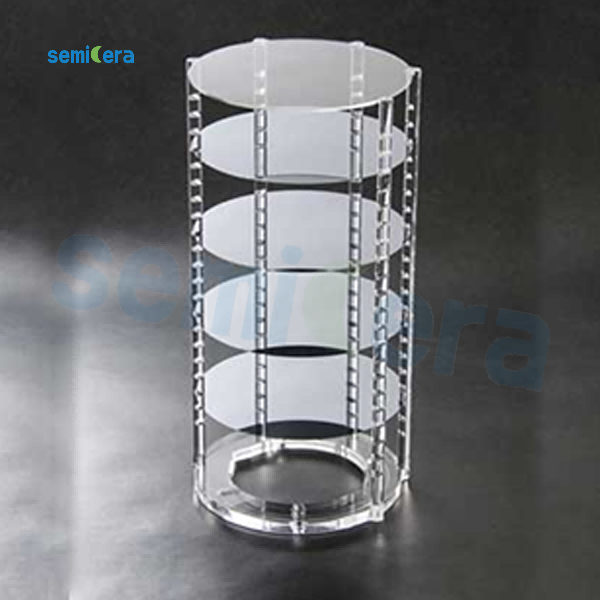Introduction
In the semiconductor industry, thermal stability is of utmost importance to ensure the reliable and efficient operation of critical components. Quartz, a crystalline form of silicon dioxide (SiO2), has gained significant recognition for its exceptional thermal stability properties. This article explores the thermal stability of quartz components and their vital role in the semiconductor industry.
Thermal Stability of Quartz Components
Quartz exhibits remarkable thermal stability, making it an ideal material for various semiconductor applications. The following factors contribute to the thermal stability properties of quartz components:
High Melting Point: Quartz has an extremely high melting point of approximately 1,700 degrees Celsius (3,092 degrees Fahrenheit). This high melting point allows quartz components to withstand elevated temperatures encountered during semiconductor fabrication processes, such as deposition, annealing, and diffusion.
Low Coefficient of Thermal Expansion: Quartz possesses a low coefficient of thermal expansion, meaning it expands and contracts minimally in response to temperature changes. This characteristic ensures dimensional stability and prevents warping or cracking of quartz components when exposed to rapid or extreme temperature variations.
Thermal Shock Resistance: Quartz exhibits excellent resistance to thermal shocks, which occur when a component experiences sudden temperature changes. Its ability to withstand thermal shocks ensures the integrity and longevity of quartz components during thermal cycling processes in semiconductor manufacturing.
Insulating Properties: Quartz is an excellent electrical insulator, allowing it to withstand high-temperature environments without conducting electricity. This property is crucial in semiconductor applications, where electrical insulation is required to prevent short circuits and ensure proper functioning of devices.
Advantages of Quartz Components in the Semiconductor Industry
The thermal stability properties of quartz components offer several advantages in the semiconductor industry:
Reliable Performance at High Temperatures: Quartz components can withstand the high temperatures encountered in semiconductor processes, ensuring stable and reliable performance even in demanding thermal environments. This reliability is crucial for maintaining process integrity and achieving consistent results.
Dimensional Stability: The low coefficient of thermal expansion of quartz ensures that components retain their shape and dimensions even under varying temperature conditions. This stability is vital for achieving precise alignments, maintaining tight tolerances, and preventing performance deviations in semiconductor devices.
Compatibility with Semiconductor Materials: Quartz is highly compatible with various semiconductor materials, including silicon, silicon carbide, gallium nitride, and more. Its thermal stability allows for seamless integration of quartz components into semiconductor devices, contributing to their overall performance and reliability.
Resistance to Contamination: Quartz is chemically inert and highly resistant to contamination from reactive gases, chemicals, and other substances commonly encountered in semiconductor processes. This resistance ensures that quartz components maintain their performance and functionality over extended periods, reducing the need for frequent cleaning and maintenance.
Applications of Quartz Components in the Semiconductor Industry
Quartz components find widespread applications in the semiconductor industry,including:
▪ Wafer Carriers and Boats:
Quartz wafer carriers and boats are used in various thermal processes, such as chemical vapor deposition (CVD) and annealing. Their thermal stability and low contamination properties ensure the safe handling and processing of semiconductor wafers, minimizing the risk of defects.
▪ Furnace Tubes and Liners:
Quartz furnace tubes and liners provide thermal insulation and protection in high-temperature processes, such as oxidation, diffusion, and epitaxy. Their thermal stability allows for precise temperature control and uniform heat distribution, essential for achieving desired material properties.
▪ Quartz Windows and Viewports:
Quartz windows and viewports are used in equipment and chambers to provide optical access while maintaining thermal stability. These components enable visual inspection, monitoring, and alignment of semiconductor processes and equipment.
▪ Quartz Sensors and Thermocouples:
Quartz-based sensors and thermocouples are employed for temperature measurement and control in semiconductor manufacturing. Their thermal stability ensures accurate and reliable monitoring of temperature-sensitive processes.
Conclusion
The thermal stability of quartz components plays a crucial role in the semiconductor industry, ensuring the reliable and efficient operation of critical devices and processes. With their high melting point, low coefficient of thermal expansion, thermal shock resistance, and insulating properties, quartz components withstand elevated temperatures, rapid temperature changes, and electrical insulation requirements. The advantages of quartz components, including reliable performance at high temperatures, dimensional stability, compatibility with semiconductor materials, and resistance to contamination, make them indispensable in various semiconductor applications. As the semiconductor industry continues to evolve, quartz components will remain a vital solution for achieving thermal stability and ensuring the longevity and performance of semiconductor devices and systems.
Post time: Apr-02-2024

